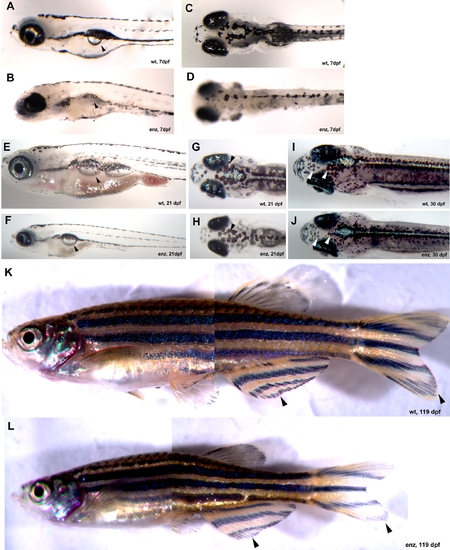
enz larvae and adults are undersized compared to wild-type siblings.
Lateral (A, B) and dorsal (C, D) views of 7 dpf wild-type (A, C) and enz (B, D) larvae. (A) Wild-type zebrafish develop swim bladders between 4 and 6 dpf (arrowhead). (B) The vast majority of enz homozygous larvae do not develop swim bladders (arrowhead). Some melanophores recover in size and morphology in enz homozygotes (D) compared to wild-type siblings (C). (E–L) Those enz homozygous larvae that do develop swim bladders survive, but are runted compared to wild-type siblings (stage-matched wild-type and enz mutant larvae shown at the same magnification). Lateral (E, F) and dorsal (G–J) views of wild-type (E, G, I) and enz mutant (F, H, J) larvae at 21 dpf (E–H) and 30 dpf (I, J). Melanophores continue to be paler in enz mutant larva than in wild-type siblings through at least 30 dpf (see arrowheads in G–J). (K, L) Lateral views of 119 dpf wild-type (K) and enz homozygous (L) adults. Normal overall morphology and pigmentation of enz mutant adults, as well as nascent fin stripe formation (L, arrowheads), suggests generalized growth retardation in enz mutants compared to wild-type siblings.
|

